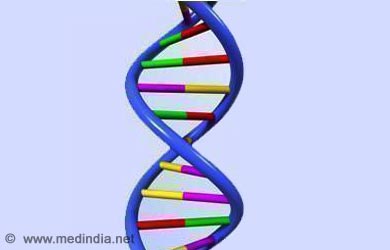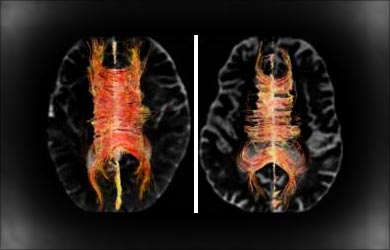
The normal axial length of the eyeballs in neonatal and adult humans is approximately 17 and 23.8 mm, respectively. In this disorder, the eyeballs are abnormally smaller with an axial length of less than 21mm in adults. In the extreme conditions, one or both eyes are totally absent; this condition is known as anophthalmia.Conditions that increase the risk of microphthalmia are maternal age more than 40 years, low birth weight and premature birth.
Causes of Small Eye Syndrome
Various genetic factors, which affect the early development of the eyes, are found to be responsible for this condition. Certain environmental factors may also contribute to the condition.
 Genetic Factors
Genetic Factors
 The condition may be inherited from an affected parent through defective or mutated genes or chromosomes
The condition may be inherited from an affected parent through defective or mutated genes or chromosomes

 Environmental Factors: Environmental factors that could result in the development of small eyes are:
Environmental Factors: Environmental factors that could result in the development of small eyes are: Exposure to harmful chemicals and toxins during pregnancy
Exposure to harmful chemicals and toxins during pregnancy
 Exposure to harmful radiations like X-rays
Exposure to harmful radiations like X-rays
 Infections during pregnancy like rubella
Infections during pregnancy like rubella
 Deficiency of vitamins during pregnancy especially vitamin A
Deficiency of vitamins during pregnancy especially vitamin A
Clinical Features of Small Eye Syndrome
 Children with microphthalmia present with visual disturbances and learning disabilities.
Children with microphthalmia present with visual disturbances and learning disabilities.
 Children and adults may also have other problems like cataract (clouding of the eye lens), glaucoma (increased fluid pressure of the eye), and colobomas (missing pieces of the eye tissue).
Children and adults may also have other problems like cataract (clouding of the eye lens), glaucoma (increased fluid pressure of the eye), and colobomas (missing pieces of the eye tissue).

Diagnosis of Small Eye SyndromeSmall Eye Syndrome is diagnosed based on-
 Pre natal and post natal examination of the child. Measurement of corneal diameter also helps in the diagnosis.
Pre natal and post natal examination of the child. Measurement of corneal diameter also helps in the diagnosis.
 Imaging tests like ultrasonography, CT and MR scanning are used to study the size of the eyeball. Ultrasound can be used to diagnose the condition even before birth.
Imaging tests like ultrasonography, CT and MR scanning are used to study the size of the eyeball. Ultrasound can be used to diagnose the condition even before birth.
 Genetic analysis is done to detect any defective genes or abnormal chromosomes. The test can be done before birth as well.
Genetic analysis is done to detect any defective genes or abnormal chromosomes. The test can be done before birth as well.
Treatment of Small Eye Syndrome
Treatment of small eye syndrome is directed towards improving the existing vision in the affected eye by strengthening the eye tissues. This helps in preventing complete blindness to some extent. Early treatment intervention helps improve the overall eye development of the affected child.
 Surgery is usually recommended both for corrective and cosmetic purpose.
Surgery is usually recommended both for corrective and cosmetic purpose.

 Prostheses are sometimes used to stimulate the growth of the socket. Patches may be used over the healthy eye to stimulate vision in the affected eye.
Prostheses are sometimes used to stimulate the growth of the socket. Patches may be used over the healthy eye to stimulate vision in the affected eye.
No comments:
Post a Comment